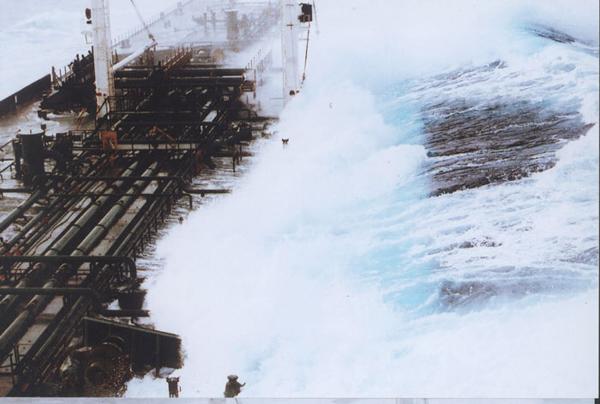
Atmosphere May Help Power Huge Freak Waves

In 1995, an 84-foot wall of water pummeled an offshore oil rig in the North Sea. This massive wave wasn't a tsunami triggered by an earthquake — it was the first documented occurrence of a "rogue wave."
Rogue waves are enormous waves that occur far out at sea seemingly in isolation and without an obvious cause. They have been plaguing sailors since the advent of seafaring, yet it wasn’t until monitoring equipment on the rig captured the telltale data that scientists could confirm that freak waves, as they’re also known, were not just the product of a sea-soaked imagination.
But in the years since then, the study of rogue waves has yielded as many questions as answers. Scientists have examined the wave patterns to look for clues as to how this seemingly random phenomenon could occur.
New research suggests that atmospheric pressure may play a role.
"Maybe this isn't just a wave problem, which is how we've been looking at this for the past decade," said Tim Janssen, associate professor of oceanography at San Francisco State University, who was not involved with the study. "This time, let's step out of the box and say maybe there's atmospheric variation going on."
Pressure from above
Oceanographers from Japan and Norway analyzed wind and wave records from the Kvitebjorn platform in the North Sea from 2003 to 2005. The researchers then split the days with rogue waves into two groups: freakish and non-freakish. Freakish days had more than two records of rogue waves in a day, which were defined as being more than double the significant wave height.
Sign up for the Live Science daily newsletter now
Get the world’s most fascinating discoveries delivered straight to your inbox.
The paper first found that a conventional analysis known as the Benjamin-Feir instability index (BFI), which is thought to show areas where huge waves are more likely based on the conditions of the ocean, did not correlate to the freakish days. That finding, Janssen said, is important because it highlights that the BFI "doesn’t fully apply in the real world."
Next, the authors looked at the sea level pressure, surface air temperature and sea surface temperature. Although temperature didn't seem to correspond to the occurrence of freak waves, an enhanced air pressure pattern called the Iceland-Azores sea level pressure was significantly related to freakish days. [Infographic: Earth's Atmosphere Top to Bottom]
The researchers also found that peak wind speed for the day, rather than average wind speed, might be a better indicator of rogue wave conditions.
"It's a very useful paper," Janssen told OurAmazingPlanet. "It will help the community to reconsider [atmospheric variations.]"
Mystery remains
Janssen also noted that it wasn't surprising that atmospheric pressure would be a factor, since changes in pressure often influence changes in wind speeds. However, there is still a lot of work to be done. Although the study identified that there was some sort of relationship between giant waves and atmospheric conditions, the nature of that relationship is not known.
If this research can be proved through other studies, it could help predict the deadly waves not just in the North Sea, but in any ocean where they occur.
"We don't really know what causes them," Janssen said. "It might not be just one physical process. It might be many. We don't know."
This story was provided by OurAmazingPlanet, a sister site to LiveScience.










